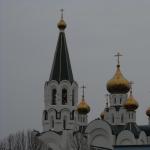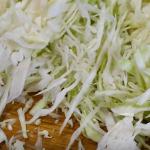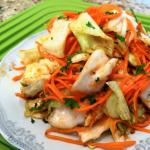Construction materials should be used only with strict consideration of the load created on the foundation. That is why you should carefully monitor the weight of fireclay bricks. In addition, the organization of transportation of products depends on this.

Peculiarities
SHA-8 and SHA-5 are the two most commonly used versions of fireclay bricks. They are obtained by firing a clay mixture of a certain shape under significant heating. To produce the product, a combination of kaolinite with other minerals is used. The technology implies that the finished composition must contain a certain amount of aluminum and silicon oxides. The two brands of fireclay bricks mentioned above are widely used for:
- installation of stoves and fireplaces;
- construction of chimneys;
- lining of melting furnaces at metallurgical plants.


By selecting the composition of refractory bricks, technologists have learned to influence not only its thermal resistance. Differences in chemical composition cause differences in density (specific gravity). So, 1 pc. fireclay brick category SHA-5 weighs 3.4 kg. Moreover, its linear dimensions are strictly prescribed in state standards and amount to 230x114x65 mm. In accordance with GOST 390, a brick measuring 250x120x65 mm must have a mass of 4 kg.

Standard fireclay products
GOST 390-96 also prescribes the mass of bricks laid on 1 pallet. It can vary from 1350 to 1600 kg. This involves laying 385-400 pieces of finished products. Weight of one cubic meter m of refractory brick ranges from 1745 to 2050 kg. Regardless of the total weight of 1 cubic meter. m should include exactly 513 pieces.

Characteristics by brand
When choosing fireclay bricks, there is no need to calculate the mass of products using complex formulas. It is enough to know the specific technical brand of the finished product. So, a lightweight brick of category ШБ 5 should weigh 3.5 kg. It is used to decorate stoves, barbecues, and make fireplaces and barbecues. Fireclay of category ША 5 has a mass of 3.4 kg. It is intended for individual residential construction.

Blocks ША 5 and ШБ 5 must have the same size - 230x114x65 mm. ShA 6 blocks, intended for laying out thermal and heating equipment, are also produced in standard dimensions - 230x114x40 mm. Moreover, the mass of such a product is 3.4 kg. The heaviest products are SHA 8. They are needed to form internal masonry in heating stoves and smoke ducts.

Example calculation
Let the construction of a furnace with a height of 2400 mm (with a base of 24 bricks) be planned. Each row has a height of 70 mm, and 300 mm is subtracted from the planned height for “cutting”. In total, 30 rows of masonry remain, and after multiplying by 2/3 (the usual proportion in the construction of “Dutch buildings”), only 20 rows will remain. The result is 480 bricks (plus 50 for “cutting”).
If you order fireclay brick ShB-5 straight, then 1 pallet will contain 385 blocks with a total weight of 1309 kg. The total requirement in this case is 530 bricks with a total weight of 1802 kg. We can conclude: 1.37 pallets of building blocks are required. You can bring them in a Gazelle-type car, but the car will be overloaded.

If you order straight fireclay ShB-8, 1 pallet will contain 297 blocks with a total weight of 1188 kg. The weight of a single product will be 4 kg. Thus, 530 pieces will weigh 2120 kg. Therefore, you will have to order a full-fledged truck to deliver a batch of fireclay bricks to the site. Of course, in reality, the size of the stoves and the number of blocks used for masonry changes, and the chimney should also be taken into account, but the general principle of calculation remains unchanged.
You will learn more about fireclay bricks from the video.
If the brick is kept for less than the required time, then such a product will absorb liquid, which will significantly reduce the strength of the brick. The brick will adhere to the mortar, but under the influence of the mass of the building, it will crumble in the future.
Fireclay brick has a characteristic color with small splashes of red.
You can also determine whether a brick belongs to this type if you lightly hit it. If you have a high-quality fireclay brick in front of you, you will hear the characteristic sound of metal.
Conclusion
Fireclay brick is a unique building material in its own right, because it can withstand very high temperature loads. This makes it simply irreplaceable in the construction of stoves, fireplaces and other buildings that come into direct contact with fire.
As for its dimensions, they all strictly correspond to the data specified in GOST. The dimensions of the bricks are very important, because the accuracy of the fit of the material, and therefore the strength of the entire building, depends on it.
Description
Fireclay brick ША-8 (ШБ-8) is a molded refractory product used in structures whose operation involves high temperatures. The brick is molded from refractory clay with the addition of chemical components, which helps to avoid cracking of the masonry when temperatures change.
Considering the technical characteristics of the material and its durability, it is widely used in the construction of various types of gas boilers, combustion chambers, various fireboxes and chimney vaults. The correct geometry of the brick, its color and pleasant texture served as a reason for using the material in private construction.
Bricks are stored on pallets in conditions that prevent the products from getting wet. The shelf life of this building material is not regulated by regulatory documents. Before buying fireclay bricks, you should study its physical and chemical characteristics and standard sizes.
Application
Firebrick ША-8 (ШБ-8) – designed for laying various thermal units, with a maximum temperature of use of 1250-1400 C o . Brick laying is carried out using a special mortar, fireclay mortar and refractory clay.
Characteristics
| Indicator name | Standard for the brand | |
| SHA | ShB | |
| 1 Mass fraction, %: | ||
| Al 2 O 3 no less | 30 | 28 |
| SiO2 | - | - |
| 2 Fire resistance, °C, not lower | 1690 | 1650 |
| 3 Additional linear shrinkage or growth, %, no more | - | - |
| at temperature, °C | - | - |
| 4 Open porosity, %, no more, for products of the group: | ||
| I | 24 | 24 |
| II | 30 | 30 |
| 5 Compressive strength, N/mm 2, not less, for products of the subgroup: | ||
| I | 20 | - |
| II | 15 | - |
| 6 Starting temperature of softening, °C, not lower | 1300 | - |
The resistance of fireclay bricks to strong heat and sudden temperature fluctuations is ensured by a special production technology. It is used in the construction of industrial furnaces and fireplace chimneys. This stone is light yellow in color, with a porous structure and high thermal conductivity. Fireclay powder (fireclay) with the addition of graphite and coke is fired in a furnace at temperatures up to 1500 C. If it is burned, a glassy film forms on the brick. This product has increased strength, but loses its fire-resistant properties. If the brick is underexposed, it will attract moisture and quickly crack.
Types and weight of fireclay bricks.
They are produced in rectangular, wedge-shaped and shaped shapes. Depending on the size, it is marked ШБ (ША)-5,6,8. The first letter Ш directly indicates the presence in the composition fireclay. The second letter indicates the maximum temperature of use according to GOST 390-96: A – 1400 degrees, B – 1350. If the product does not contain the second letter, this indicates that it is manufactured according to specifications. The number indicates the aspect ratio.
Unlike ordinary ceramic bricks, refractory bricks are denser and therefore heavier. Fireclay brick SHA-5 with dimensions 230x114x65 mm weighs 3.5 kg; ShA-6 - 230x114x40 mm weighs 2.8 kg, ShA-8 250x124x65 mm - 4.3 kg. Bricks marked ShB are slightly lighter than ShA. ShB-5 with dimensions 230x114x65 mm, weighs 3.4 kg; ShA-6 - 230x114x40 mm weighs 2.7 kg, ShA-8 250x124x65 mm - 4 kg.
Signs of high-quality fireclay bricks.
To check compliance with the firing, you need to hit the brick with a metal object. The sound from the impact should be loud, and the brick should have a slight spring. After a strong impact, the briquette will break into several large parts. A poorly dried or burnt product will produce a dull sound and crumble into small pieces. Improper storage may reduce product quality. Bricks should be stored in a well-ventilated, dry area, stacked on pallets. The presence of chips, cracks, and white spots on bricks is not allowed. The color should be uniform, light yellow with small inclusions.
When manufacturing products, many manufacturers rely on their own specifications instead of the conditions prescribed by GOST. Therefore, when choosing a material, the question arises of which brick to take. Indeed, in terms of a number of characteristics, products manufactured according to GOST and according to the manufacturer’s specifications very often do not coincide. In this case, it is better if possible purchase goods with a GOST mark, because it is of better quality.
As for geometric parameters, GOST specifies the size of a standard rectangular product as 230x113x65 mm, and this is considered the optimal material for the construction of brick structures. But today other dimensional characteristics are also acceptable, so the market is filled with a variety of products from different manufacturers.
The mass of products also has different indicators and fluctuates in the range from 2.8 kg to 4.5 kg , with permissible weight according to GOST – 3.7 kg. When purchasing, do not forget about this, since the thermal conductivity of the material depends on the mass. To maintain heat in a room, you need to choose a material with more weight, because low weight increases its thermal conductivity.
From the quantitative content in the composition of the building material aluminum oxide Resistance to chemicals, alkalis and high temperatures depends. The content of this element in the composition affects the structure of the material, making it porous . And porous brick heats up for quite a long time, but also cools down longer than usual, retaining the resulting heat.
At the same time, as porosity increases, strength decreases. Therefore, it is worth selecting material with an optimal density of 1700–1900 kg/m. Density also affects such properties as: moisture absorption, thermal insulation, adhesion to the mounting mortar and the weight of fireclay bricks.
You can determine the porosity of a brick just by holding various options in your hands.
To summarize, we can say that when choosing such a building material, production standards, dimensions, weight, aluminum oxide content and density should be taken into account.
Marking
For ease of classification and ease of selection of this building material, it was developed marking, thanks to which you can immediately determine the properties of the material. It reflects product dimensions, temperature properties and technical characteristics.
The most popular brands of fireclay bricks: SHA, ShB, SHAK, SHUS, ShV, PV and PB.
Using the example of a bar marked ShB 5 SL, we will decipher the data from the manufacturer.
In addition to the standard rectangular shape of fireclay brick, there is also trapezoidal and wedge.
Application area
Due to its resistance to temperature changes and the effects of alkalis and chemicals, fireclay bricks have a wide range of applications. It is used in industrial enterprises in installations that emit active chemicals during combustion: blast furnaces, boilers, fuel chambers. 

The solution used to create thermal devices is also important. Typically, the same ingredients used in brick production are used for mixing. This gives the oven a high level of heat resistance.
To lay fireclay bricks of the ShB-5 or ShB-8 brand, refractory clay containing crushed brick is used. The resulting solution is called or "fireclay clay".
Before installing furnace equipment, the operating temperature of the future structure should be calculated. The width of the installation seam between fireclay bricks depends on this indicator. The higher the operating temperature, the thinner the masonry layer. Sometimes it does not exceed 1 mm. Such work requires a high level of skill from the performer, and good quality of the prepared solution.
As a result, the consumption and cost of the necessary materials increases, and you need to choose product brands with higher fire resistance.
Despite all the advantages, there are nuances that limit the use of fireclay bricks ( negative points ):
- hygroscopicity– ability to absorb moisture. This quality reduces the strength of the product when heated and increases its weight.
- Low resistance to freezing. Fireclay bricks of the ShB-5, ShB-45, ShB-94 brands withstand low temperatures best. It is not suitable for household stoves ШБ-8, because if the stove is not operated continuously, it begins to crumble as it cools down.
- High product density. Such material is difficult to cut if you need to change the original dimensions.
- High cost, long warm-up time and the need to prepare a special mounting mixture.
How to distinguish marriage

There are special requirements for the quality of fireclay bricks, since it determines strength future furnace, its high temperature resistance And ability to retain heat . Therefore, it is necessary to exclude even the slightest defect in the product.
This is very easy to check. If you knock on a brick, a high-quality product will make a metallic ringing sound. A dull sound indicates insufficient firing during the production process.
To test its strength, you need to hit it harder. A high-quality briquette will split into large pieces, and small crumbs ultimately indicate a defect.
Low-quality bricks should not be used for laying furnaces. They acquire the non-inherent properties of absorbing and retaining moisture. This kind of material loses three quarters of its beneficial qualities in contrast to dry.
Conclusion
When purchasing fireclay material, you should pay attention to the information  markings to have an idea of the manufacturer and class of refractory. For the construction of some objects, it may be necessary to combine several types of fireclay, depending on the location of the material and the functions assigned to it.
markings to have an idea of the manufacturer and class of refractory. For the construction of some objects, it may be necessary to combine several types of fireclay, depending on the location of the material and the functions assigned to it.
To calculate the optimal amount of fireclay bricks of different brands and sizes, you may need the help of specialists who will help you save when purchasing building materials.




